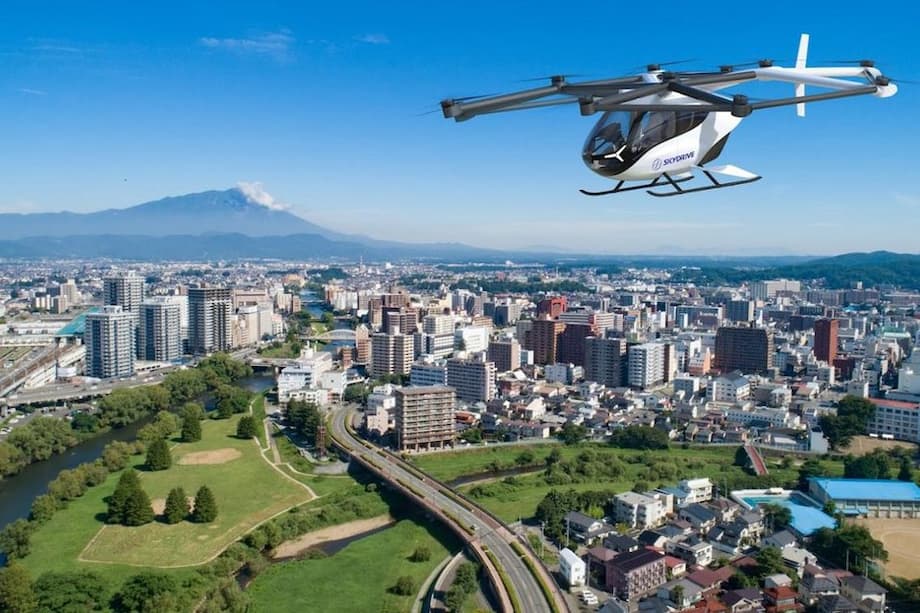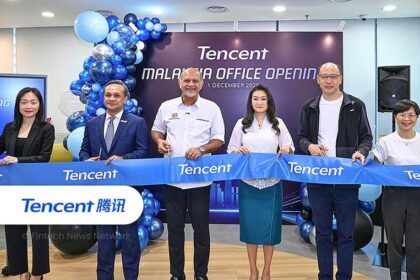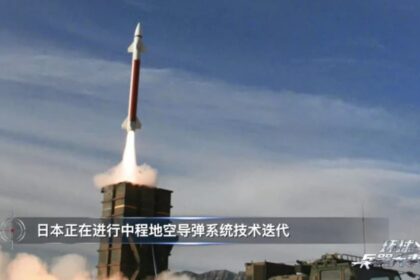Japan’s Next Mobility Revolution: JR East’s Flying Car Launch in 2028
East Japan Railway Company (JR East), one of Japan’s largest and most innovative transportation providers, is preparing to launch commercial flying car services in Iwate Prefecture by fiscal year 2028. This bold move positions Japan at the forefront of the global race to integrate advanced air mobility into everyday life, promising to transform not only tourism and regional travel but also the very concept of urban and rural connectivity.
- Japan’s Next Mobility Revolution: JR East’s Flying Car Launch in 2028
- What Are Flying Cars and Why Now?
- JR East’s Vision: From Railways to the Skies
- Why Iwate? The Regional Impact of Flying Cars
- Technology Behind the Dream: SkyDrive’s eVTOL Aircraft
- Infrastructure and Regulation: Building the Foundations for Flying Cars
- Challenges and Opportunities: What Lies Ahead?
- Global Context: Japan’s Place in the Flying Car Race
- In Summary
The initiative, which will begin with shuttle services and sightseeing tours, is part of JR East’s broader strategy to address the challenge of “secondary transportation”—the crucial last-mile connections beyond train stations that often limit the convenience of rail travel, especially in less urbanized regions. By leveraging cutting-edge electric vertical takeoff and landing (eVTOL) technology, JR East aims to bridge these gaps and create new opportunities for tourism and regional development.
What Are Flying Cars and Why Now?
Flying cars, more accurately described as eVTOL (electric vertical takeoff and landing) aircraft, represent a new class of mobility vehicle. Unlike traditional airplanes or helicopters, eVTOLs can take off and land vertically, require minimal infrastructure, and are powered by electric motors, making them quieter and more environmentally friendly than conventional rotorcraft. These vehicles are designed to operate in urban and regional environments, offering short-range flights that bypass ground congestion and dramatically reduce travel times.
Globally, the race to commercialize flying cars is heating up. The UK, for example, expects flying taxis to be operational by 2028, with government and industry investing heavily in infrastructure and regulatory frameworks. Companies like Vertical Aerospace and Joby Aviation are developing vehicles capable of carrying multiple passengers at speeds exceeding 150 mph, promising to make journeys three times faster than by car. The Japanese government and industry players are similarly motivated, seeing advanced air mobility as a solution to demographic challenges, worker shortages, and the need for sustainable transportation options.
JR East’s Vision: From Railways to the Skies
JR East’s flying car project is not an isolated experiment but a natural extension of its long-standing commitment to innovation in transportation. The company has already announced plans to introduce driverless bullet trains (shinkansen) by the mid-2030s, with incremental automation set to begin as early as 2028. These efforts reflect JR East’s strategy to adapt to Japan’s aging population and declining workforce by embracing automation and new mobility technologies.
For the flying car initiative, JR East has partnered with SkyDrive, a Japanese startup specializing in eVTOL aircraft. The partnership, formalized in May, will see JR East deploy SkyDrive’s SD-05 model—a compact aircraft capable of carrying a pilot and two passengers. The initial focus will be on providing shuttle transfers between Morioka Station on the Tohoku Shinkansen line and the soon-to-open hotel at Koiwai Farm in Shizukuishi, as well as offering aerial sightseeing tours of Koiwai Farm and the iconic Mount Iwate.
At a recent event in Tokyo, JR East President Yoichi Kise emphasized the company’s ambition:
We aim to create new forms of mobility through land-based railways and flying cars as a means of addressing the regional challenge of developing secondary transportation beyond train stations.
Integrating Air and Rail: The Future of Seamless Mobility
JR East’s vision goes beyond simply adding a new mode of transport. The company is actively working to integrate flying cars into its broader mobility ecosystem. This includes developing landing sites (sometimes called “vertiports”) at major hubs like the new Takanawa Gateway City development in Tokyo, which is set to open fully in 2026. The goal is to create a seamless network where passengers can transfer effortlessly from high-speed trains to eVTOL flights, reaching destinations that are currently underserved by rail or road.
This integration is part of a global trend toward “multimodal” transportation, where different forms of mobility—trains, buses, autonomous vehicles, and now flying cars—are connected to provide efficient, flexible, and sustainable travel options. In Japan, where the railway network is already among the world’s most advanced, the addition of eVTOL services could set a new standard for urban and regional mobility.
Why Iwate? The Regional Impact of Flying Cars
The choice of Iwate Prefecture as the launch site for JR East’s flying car operations is strategic. Iwate, located in Japan’s Tohoku region, is known for its natural beauty, including the scenic Koiwai Farm and Mount Iwate. However, like many rural areas in Japan, it faces challenges related to declining population, aging residents, and limited transportation options beyond major train stations.
By introducing flying car services for both shuttle transfers and sightseeing, JR East aims to boost tourism and provide a new economic lifeline for the region. The company’s plan to open a hotel at Koiwai Farm in 2026 is closely linked to this strategy, offering visitors a unique travel experience that combines high-speed rail, luxury accommodation, and aerial tours—all seamlessly connected.
This approach could serve as a model for other regions in Japan and beyond, demonstrating how advanced air mobility can revitalize local economies, attract tourists, and improve quality of life for residents.
Technology Behind the Dream: SkyDrive’s eVTOL Aircraft
SkyDrive’s SD-05, the aircraft chosen for JR East’s operations, is at the cutting edge of eVTOL technology. Designed to carry a pilot and two passengers, the SD-05 is compact, lightweight, and fully electric. Its vertical takeoff and landing capability allows it to operate from small landing pads, making it ideal for urban and regional use where space is at a premium.
Unlike helicopters, eVTOLs like the SD-05 are designed to be quieter, safer, and more affordable to operate. They use multiple electric rotors for redundancy and stability, and their battery-powered systems produce zero emissions at the point of use. SkyDrive, founded in 2018, has rapidly advanced its technology with support from major Japanese corporations and government agencies, positioning itself as a leader in the emerging advanced air mobility sector.
The collaboration with JR East is a significant milestone for SkyDrive, providing a real-world platform to demonstrate the viability of eVTOL services and gather operational data that will inform future developments.
Infrastructure and Regulation: Building the Foundations for Flying Cars
Launching commercial flying car services requires more than just advanced aircraft. It demands a comprehensive infrastructure, including landing sites, charging stations, air traffic management systems, and robust safety protocols. JR East is addressing these challenges by incorporating flying car landing sites into new developments like Takanawa Gateway City and by working closely with regulators to ensure compliance with aviation standards.
Japan’s Civil Aviation Bureau is actively developing guidelines for eVTOL operations, drawing on international best practices and collaborating with industry stakeholders. The regulatory environment is evolving rapidly, with a focus on ensuring safety, minimizing noise and environmental impact, and integrating new air mobility services into existing transportation networks.
Globally, similar efforts are underway. The UK’s Civil Aviation Authority, for example, is investing in research and regulatory frameworks to support the introduction of flying taxis by 2028. These international developments highlight the importance of coordinated action between government, industry, and the public to realize the full potential of advanced air mobility.
Challenges and Opportunities: What Lies Ahead?
While the promise of flying cars is exciting, significant challenges remain. Technical hurdles include battery limitations, flight range, weather resilience, and the need for reliable autonomous systems. Infrastructure must be built from the ground up, and public acceptance will depend on demonstrating safety, affordability, and convenience.
However, the opportunities are immense. Flying cars could:
- Reduce travel times dramatically, especially in regions with limited ground transportation
- Alleviate road congestion and lower emissions by shifting short-haul trips to electric aircraft
- Open up new tourism experiences, such as aerial sightseeing and rapid transfers between remote destinations
- Support disaster response and medical transport in emergencies
JR East’s initiative is particularly noteworthy for its focus on integrating flying cars with existing rail infrastructure, creating a blueprint for other countries and companies to follow.
Global Context: Japan’s Place in the Flying Car Race
Japan is not alone in pursuing advanced air mobility. In addition to the UK’s efforts, companies in the United States, Germany, China, and South Korea are developing eVTOL aircraft and planning pilot projects in major cities. What sets Japan apart is its unique combination of technological expertise, dense urban centers, and a highly developed public transportation network.
JR East’s flying car project is part of a broader wave of innovation sweeping Japan’s transportation sector. The company’s push for driverless shinkansen, investment in smart city developments like Takanawa Gateway City, and embrace of data-driven services all reflect a commitment to creating a seamless, efficient, and sustainable mobility ecosystem.
As Japan grapples with demographic shifts and the need to maintain economic vitality in rural areas, advanced air mobility offers a promising solution. By pioneering flying car services in Iwate and beyond, JR East is helping to shape the future of transportation—not just for Japan, but for the world.
In Summary
- JR East will launch commercial flying car (eVTOL) services in Iwate Prefecture by fiscal year 2028, starting with shuttle and sightseeing operations.
- The project is a partnership with SkyDrive, whose SD-05 aircraft can carry a pilot and two passengers.
- Flying car services will connect major train stations with destinations like Koiwai Farm and Mount Iwate, enhancing tourism and regional mobility.
- JR East is integrating flying car infrastructure into new developments such as Takanawa Gateway City in Tokyo.
- The initiative is part of JR East’s broader strategy to address demographic challenges and lead in transportation innovation, alongside plans for driverless bullet trains.
- Japan’s efforts mirror global trends, with countries like the UK also targeting 2028 for flying taxi rollouts.
- Key challenges include infrastructure, regulation, public acceptance, and technical hurdles, but the potential benefits for travel, tourism, and sustainability are significant.












